Tests and surveys
Dynamic surveys
Dynamic characterisation using accelerometer sensors
The purpose of the dynamic survey is to experimentally identify the free vibration frequencies and the main ways to compare them with the theoretical frequencies obtained by numerical modelling. From the comparison it will be possible to proceed to the calibration of the model, varying the input parameters until the correspondence of the theoretical response parameters with the experimental ones both in dynamic and static field is obtained. The experimental results obtained, being linked to all the geometrical and mechanical elements of the structure, represent a valid monitoring instrument over time for the possible variation of the load-bearing capacity and of the general conditions of the material.
Dynamic characterisation using micro-seismic loaders
The purpose of the dynamic investigation is to experimentally identify the free vibration frequencies. The dynamic parameters, being linked to all the geometric and mechanical elements of the structure, represent a valid instrument for the monitoring of the possible variation of the general conditions over time. The measurement is carried out through the use of particularly sensitive sensors, micro-seismic loaders, which allow the detection of the minimum oscillations deriving from the seismic background noise or from the wind thrust.
Damage caused by vibrations
This purpose of this test is to verify the response of the structural elements subjected to the vibrations resulting from the passage of vehicles. The methodology for the survey is based on the detection of vibrations, using three-dimensional measurement, at the points where damage of probable dynamic origin have been detected. Measurements are carried out during normal traffic levels.
Dynamic testing
This consists in the inspection of the correspondence of the experimental dynamic parameters with the theoretical ones deriving from the finite element analysis. The dynamic test functions as a substitute for the static test when the latter causes excessive difficulties for the transit of normal traffic. It is also possible to perform it with a calibrated sample. It is also possible to perform it with a calibrated sample.
Environmental disturbance caused by vibrations
This type of test aims to detect the level of disturbance to people caused by vibrations related to activities such as the traffic of vehicles on road and rail. Three-dimensional accelerometric sensors are used, placed in the areas of disturbance, detecting the vibrations both in the absence of a source and during the passage of vehicles.
Survey of the tensional state of the chains and stays
The purpose of this test is to determine the vibration frequency of a structural chain in order to go back to its tensional state. An accelerometer is fixed in a horizontal transverse direction to the chain, an impulse is caused in the horizontal direction and the trend of the oscillation is detected. The data sequence is processed using the Fourier transformer, determining its spectrum and fundamental frequencies. The data sequence is processed using the Fourier transformer, determining its spectrum and fundamental frequencies. From these we go back to the operating tension.
Dynamic vibration analysis by interferometer
In this type of analysis the movements of the structure are detected using an interferometric Radar. The System can simultaneously measure several points of a structure, in dynamic mode, resulting in shifts or frequencies of vibration. This is done without contact with the element being measured, without modifying its structural characters and without installing anything on it. With the data acquired and analysed it is possible to carry out a modal analysis of the oscillation of the structure.
Piacenza
Dynamic surveys for the dynamic characterisation of the piezometric tower of a thermoelectric power plant in order to obtain comprehensive information regarding the vibration modes of the structure under examination.
Piacenza
Dynamic surveys suitable for the dynamic characterisation of a castle in order to obtain comprehensive information concerning the ways the structure under examination might vibrate.
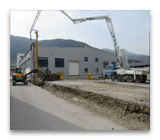
Bolzano
The purpose of the measurements was to measure the ground vibrations produced by pumping concrete columns into the adjacent ground for the construction of an extension to the building. The purpose of the survey is to verify that the maximum accelerations are below the limits provided by the manufacturers of the measuring machines and are within the permissible acceleration-frequency graph..
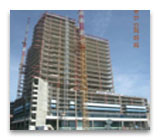
GENOVA
Dynamic surveys for the dynamic characterisation of a tower in a business centre in order to obtain comprehensive information concerning the ways the structure under examination might vibrate.
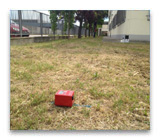
LUGO
Seismic vulnerability surveys and MASW field surveys for the assessment of the subsoil category.
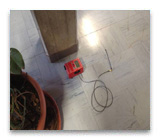
BOLOGNA
Dynamic surveys for the dynamic characterisation of a school in order to obtain comprehensive information concerning the ways the structure under examination might vibrate.
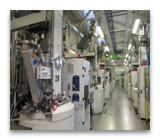
Bolzano
The purpose of the surveys was to measure the vibrations of 4 machines due to their operation, that of the neighbouring machines and the passage of electric forklifts: in particular, the frequency values were measured with the respective acceleration amplitudes at the level of the first and intermediate floor slabs.
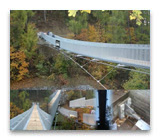
Bolzano
Experimental dynamic characterisation of the Schlossberg footbridge in Brunico (BZ).

